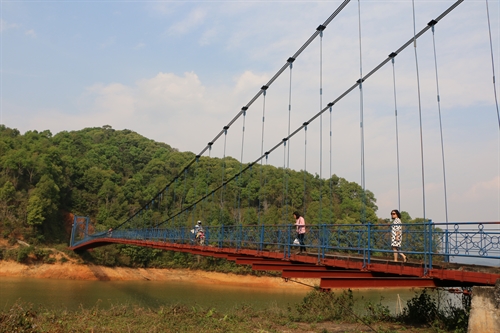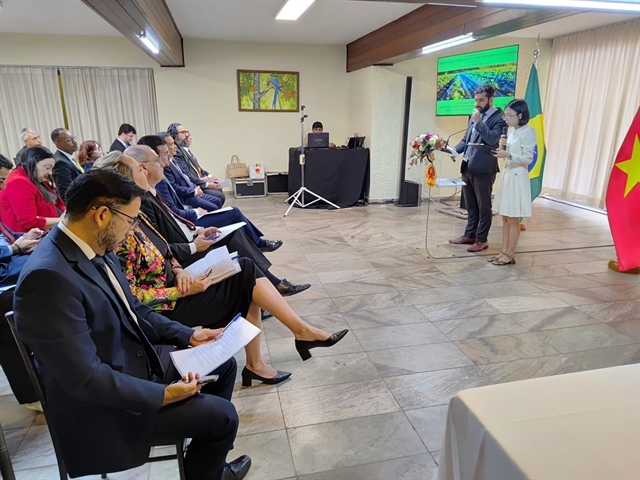 Society
Society

The second phase of a bridge building programme, which aims at building nearly 4,000 bridges in remote areas, will be kicked off next month, said Nguyễn Văn Huyện, director of the Directorate for Roads of Việt Nam (DRVN).
 |
| A suspension bridge in Mường Phăng commune of Điện Biên district in northern Điện Biên province facilitates local travel. Nearly 4,000 bridges will be built in remote areas of Việt Nam during the second phase of the Nhịp cầu yêu thương (Spans of Love) humanitarian programme in 2015-2020. - VNS Photo Đoàn Tùng |
HÀ NỘI – The second phase of a bridge building programme, which aims at building nearly 4,000 bridges in remote areas, will be kicked off next month, said Nguyễn Văn Huyện, director of the Directorate for Roads of Việt Nam (DRVN).
Under the programme, a total of 3,959 bridges, including many suspension bridges, will be built in more than 5,200 communes in 450 districts of 50 provinces and cities with ethnic minorities. Priority will be given to 63 impoverished districts.
In the first phase 2014-15, a total of 186 suspension bridges were built in 28 mountainous provinces in northern, central and Central Highlands areas.
Huyện, told the Nông Thôn Ngày Nay (Countryside Today) newspaper that funds for the second phase 2015-20 would come from the Nhịp cầu yêu thương (Spans of Love) humanitarian programme, launched by the Ministry of Transport (MoT) in April 2014.
In the Spans of Love programme, individuals and businesses are being urged to help achieve the government’s target of thousands of new bridges in poor and mountainous regions to accelerate economic development and improve the living conditions of impoverished communities.
The World Bank is also planning to lend US$385 million (including interest) towards the programme, he said.
Huyện said that when the first phase was completed, the DRVN asked localities to check all the bridges. Since then, the DRVN will have adjustments made based on different areas’ climate and terrain.
The DRVN proposed the MoT reduce the bridges’ maximum loading capacity in remote areas with few vehicles passing from nine people per kilometre down to seven people per kilometre.
Reducing the loading capacity will allow for smaller pillars and less cabling, which would reduce costs.
The DRVN’s calculation showed that with the adjustments, expenses for building one bridge would be down by 20 per cent. This equates to one extra bridge for every four bridges being built, Huyện said.
Nguyễn Đình Đại, deputy director of the Lạng Sơn Department of Transport, said that the province used to have nine suspension bridges, but most of the bridges were downgraded.
The programme to build bridges for traffic safety in areas where most inhabitants are of ethnic minority groups brought great happiness and development opportunities to residents in poor areas, he said. — VNS




